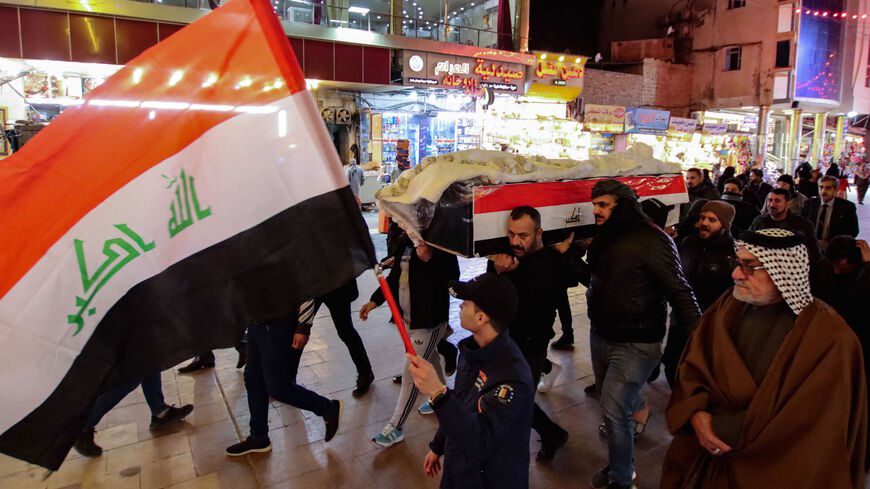After the parliamentary elections held in October 2021, the Sadrist Movement led by the popular Shia leader Muqtada al-Sadr emerged as the biggest party, with 73 out of 329 seats. Yet despite the massive win, Sadr has been unsuccessful in assembling a coalition for the past eight months.
Coupled with the parliamentary stalemate have been the constant postponements of the presidential elections. While the position of president is largely ceremonial, the holdup in the election process highlights the dysfunction of the government as a whole. The poles have been pushed off no few than three times since April due to the boycott of parliamentary sessions by the majority of deputies.
In the midst of all this political chaos, and with no end in sight, some have advocated for increased foreign intervention to ensure Iraq can regain a modicum of stability.
Unfortunately, these views are simply shortsighted and fail to take into account the hard-learned lessons from Iraq’s recent history.
The fact is, every attempt at foreign meddling in Iraq’s political process has triggered more disorder, and ultimately more suffering for the Iraqi people. What’s more, the resulting turmoil has always opened the door to sectarian violence and allowed militant groups to gain traction in the country.
The first time the West attempted to mold Iraq’s political landscape came following the December 2005 election in which the United Iraqi Alliance selected Ibrahim Jaafari as prime minister. After U.S. Ambassador Zalmay Khalilzad told Shia leaders that President Bush opposed the choice, Jaafari was forced to step down. As could be expected, the intervention of foreign governments in the political process formed the perfect pretext for sectarian violence. Almost immediately following Jaafari’s resignation, a wave of suicide bombings and street clashes erupted that ended up taking the lives of hundreds in cities all over Iraq. it was during this period that the infamous triple suicide bombing at the Shia Buratha mosque in Baghdad took place, an attack that killed 85 and wounded 160.
But the next years saw U.S. interference only increase.
In 2007 for instance, President Bush announced the “surge” of an additional 30,000 U.S. troops. While the influx of forces was meant to crush the mass sectarian violence and counter jihadi extremism, it was also designed to pressure realignment within Iraq’s political landscape, which Washington believed would bring stability to the government structure.
As was expected, this intervention also triggered a wave of violence throughout Iraq–indeed the deadliest that had been seen until that point. Car bombings and other attacks killed hundreds in Iraqi cities. No target was off-limits for the terrorists who even carried out devastating bombings in Muslim shrines.
Fast forward to 2010, the situation was no better.
Iraq held parliamentary elections in March, the second since the 2003 U.S. invasion. But no single coalition came close to winning majority seats. The emergence of a new government was held up because of political gridlock that played out over several issues for eight months. Again, the American’s intervened. Nouri al-Maliki of the Dawa party, a moderate in line with U.S. interests and palatable policymakers in Washington, served as a caretaker prime minister for this entire period.
This factional infighting within Iraq would continue all through 2010 until President Obama officially ended the seven-year U.S. combat mission in August. But while international military presence in Iraq largely ended, the influence of foreign states did not.
Iraq today remains a battleground of both regional actors the likes of Iran as well as global powers such as the United States and Britain. Many observers have even speculated that the political balance in Iraq was intentionally molded into a fragile set-up in order to perpetually fail.
Currently, the deadlock among policymakers is set between those who would see Iraq play the role of a puppet state, subservient to foreign whims, and those who envision a united Iraq which focuses on local issues and self-sovereignty. On one side the alliance known as the Coordination Framework Alliance (CFA)–in turn the political umbrella for the largely Shia Popular Mobilization Forces militia–is stubbornly pro-Iranian and has boycotted election processes at every chance.
On the other side is the Sadrist movement which openly calls for the cooperation of Iraq’s three main religious-ethnic groups–Shia, Sunni, and Kurds. This would is the clearest path forward for a stable and prosperous Iraq that could hold its own in the region, and remain independent from international incursions into its politics. As many experts have cited, the incredible popularity of Sadr’s movement shows that Iraqis oppose the current system and are looking to shift to a more representative government–one that will focus on Iraq’s internal issues and reject interventionism.
But alas, whether it be the pro-Iranians from within or Western actors from without, many are still holding on to the years-old model of forcing a preferred image onto the Iraqi government.
Those concerned for Iraq have other options for helping ensure the country’s future. These include promoting reforms to Iraq’s constitution that would be more conducive to Iraq’s political landscape and diverse electorate. These include offering additional protections to the opposition (who currently are left powerless after government formations), reexamining the two-thirds “quorum rule” that requires a wide consensus for forming a government but a simple majority for other important decisions, and limiting major appointments (such as the Defense and Interior Ministries) to super majority votes.
Further meddling in the country’s political processes should be the last thing on world leaders’ minds. Iraq needs to be empowered to through off the shackles of foreign interference–not subjected to more of it.



















